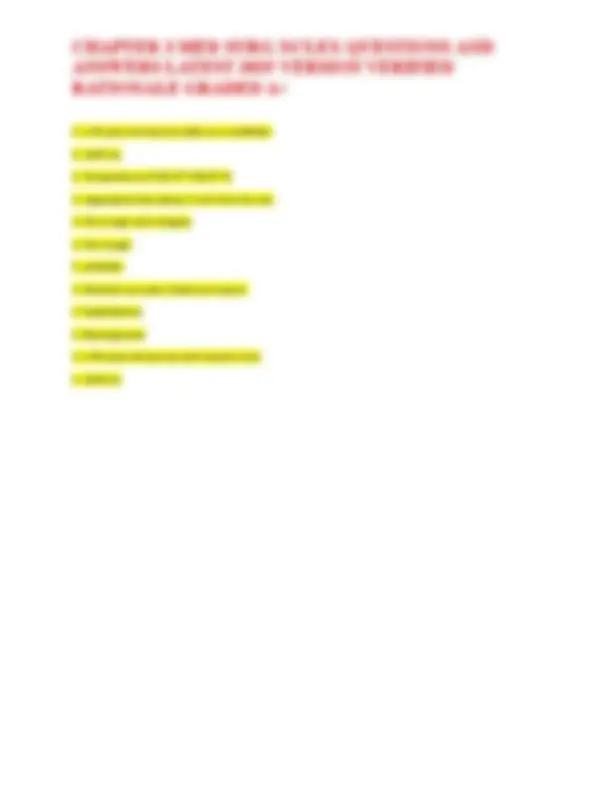



Study with the several resources on Docsity

Earn points by helping other students or get them with a premium plan


Prepare for your exams
Study with the several resources on Docsity

Earn points to download
Earn points by helping other students or get them with a premium plan
Community
Ask the community for help and clear up your study doubts
Discover the best universities in your country according to Docsity users
Free resources
Download our free guides on studying techniques, anxiety management strategies, and thesis advice from Docsity tutors
CHAPTER 3 MED SURG NCLEX QUESTIONS AND ANSWERS LATEST 2025 VERSION VERIFIED RATIONALE GRADED A+.pdf
Typology: Exams
1 / 3

This page cannot be seen from the preview
Don't miss anything!


You respond to a patient complaining of pain, burning, and wetness over the peripheral IV site. On assessment, you find that the IV insertion site is tender and cool to touch. These are signs and symptoms of: Which would be the most accurate way to assess for dehydration in an elderly patient? Which patient(s) can be considered at high risk for fluid and electrolyte imbalance? (Select all that apply.) What should nurses monitor when a patient is receiving a diuretic regularly? (Select all that apply.) The new patient on the floor has been diagnosed with gastroenteritis. What would be the most critical level to assess? In planning care for a patient with congestive heart failure, you choose the problem statement: fluid volume excess due to altered cardiac output. The Problem statement would most likely be supported by which sign or symptom? At the beginning of the shift, there is 410 mL of fluid in the IV bag. A piggyback medication containing 150 mL is hung at 12:00 noon to run over 30 minutes. You hang a new bag of 1000 mL at 1:00 P.M. to run at 125 mL/hr. At the end of shift there is 250 mL left in the bag. The count for the total amount of fluid infused during your shift ending at 7:00 P.M. is: An older adult man is admitted for severe disorientation, confusion, and general weakness. His spouse reports that he is not able to tolerate any food or fluids and has had several episodes of vomiting and diarrhea. Which imbalance is the patient most likely experiencing? A patient who has congestive heart failure has a fluid excess with a weight gain of 1.5 pounds since yesterday and edematous ankles. Which provider's order has the highest priority?